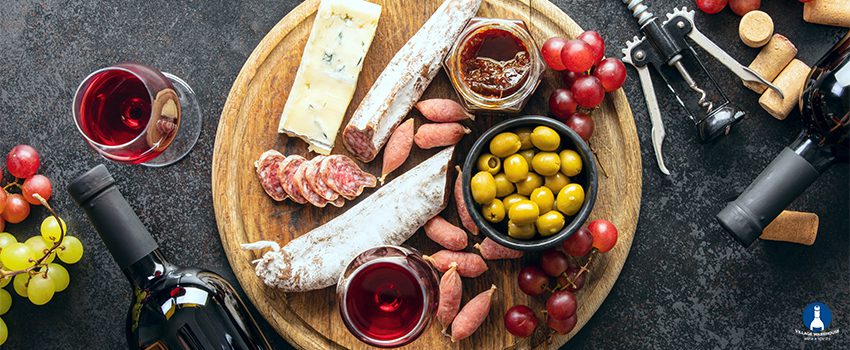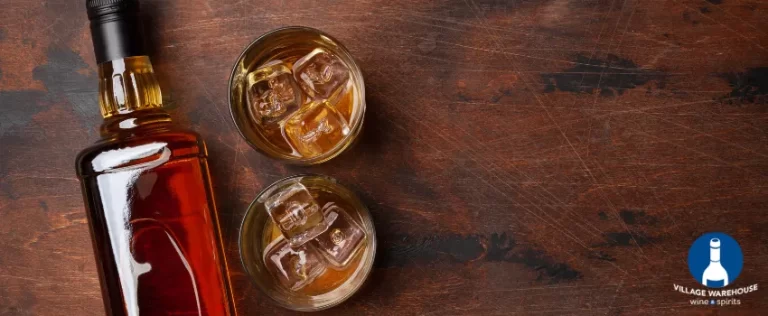A charcuterie board can make any occasion memorable. It has different cheeses and smoked or preserved meat, and sometimes fruits and crackers. The best part about charcuterie boards is the wine you serve them with. Find out which wine is best with certain types of cheeses and charcuterie.
Wine and charcuterie are a match made in heaven. The platter can have a wonderful combination of sweet and strong flavors, depending on which charcuterie are used. Wine can make or break the overall charcuterie board experience. Although it may seem daunting at first, choosing the best wine for charcuterie is not difficult. You just need to know some basics.
Types of Cheese Used in a Charcuterie Board
A wine cheese board will never be complete without blocks of cheese. Here is a rundown of the different types of cheese for charcuterie boards commonly used in cheese platters for their distinct flavors, scents, and textures.
Hard Cheese
Hard cheese refers to the type of cheese that undergoes further pressing and heating, turning it into a block. Hard cheese is firm and strictly monitored to contain only 39% moisture and a 50% milk-fat ratio. Serve hard cheese at room temperature if you plan to make it for your wine cheese board. This will allow for easier cutting and for the flavors to emerge.
- Asiago cheese – Asiago is a popular type of hard cheese known for its milder flavor. This cheese is initially sweet, but the more it undergoes aging, the sweetness makes way for a sharp, tangy flavor. Asiago cheese is made from Italian cow’s milk and is often compared to Parmesan. However, the flavor of Asiago provides a nuttier and creamier texture.
- Parmigiano-Reggiano – Commonly known as Parmesan cheese, Parmigiano-Reggiano is made from skimmed cow’s milk. This particular type of cheese is also known for its pale yellow rind and lighter interior. It takes at least two years to age this particular type of cheese to achieve its uniquely sharp flavor and granular texture.
- Emmental cheese – The interior look of the Emmental cheese (also known as Swiss cheese) is probably the most familiar image of cheese. This type of cheese exhibits holes due to the bacteria used in its fermentation process producing carbon dioxide. Swiss cheese flavors vary. They can be mild or strong depending on the maturity of the cheese.
Semi-Firm Cheese
Unlike the crumbly texture of hard cheese, semi-firm cheese is a little softer with a springy texture. Semi-firm cheese undergoes aging for a year or less, giving it a mild, sweet, and buttery flavor. The fragrance of semi-firm cheese is not that strong compared to hard cheese. Here are the common types of semi-firm cheese available in groceries:
- Cheddar cheese – This is probably among the most popular. It is a household name known for its yellow-orange color and its sharp flavor. Charcuterie are often paired with Cheddar to complement the smoky taste of the aged meat.
- Gouda cheese – Unlike Cheddar, Gouda cheese is known for its beige color. This semi-firm cheese is made with milk from goats or sheep, producing a nutty flavor and a mild aroma.
- Gruyere cheese – Gruyere cheese is highly popular for making fondue and the French grilled cheese sandwich because of its melting capacity. Whole cow’s milk is needed when making Gruyere, and the curing process usually takes six months or more. This cheese contains fruity and nutty flavors with earthy tones.
Blue Cheese
Charcuterie that are preserved for a long period of time exhibit a strong, smoky flavor and go well with blue cheese. Its stronger flavors complement the cured meat on a charcuterie board and wine combo.
Blue cheese is unmistakable: crumbly texture, full flavors, strong aroma, and blue streaks all over. The unique blue streaks all over the cheese are due to the addition of refined natural mold to enhance the flavor.
- Gorgonzola cheese – This type of blue mold cheese is known for its pungent aroma and strong, sharp flavor. Gorgonzola is the go-to cheese when the rest of the ingredients are sweet, to balance the flavors.
- Roquefort cheese – Roquefort is a classic recipe derived from sheep’s milk with a complex mix of sharp and tangy flavors. The Roquefort cheese is moister compared to other types of blue mold cheese.
Aside from these common types of cheese, cured meats are also paired with crumbly cheese such as feta, cottage cheese, and goat cheese. These are readily available in a box or in wedges along with other charcuterie items.
Different Wines For Charcuterie Board
A complete gastronomic experience comes from different layers of flavor and texture. A wine cheese platter aims to provide a good combination of flavors with each slice of charcuterie, cheese, pieces of fruit, and other condiments. A bottle of wine completes the set. Think of it as the cherry on top of this social menu. However, not all wines can complement cured meats and cheese.
Sommeliers and connoisseurs are recommend that when choosing wine for the wine cheese platter. One should consider the wine that will best complement the charcuterie and not the other way around.
Light-Flavored Charcuterie
Like cheese, the meats that are used for charcuterie boards are aged until they reach a certain flavor. If you like meats that are high in flavor but not heavily spiced like prosciutto or mortadella, a bottle of Pinot Noir or Merlot will suffice. These two types of red wine are lighter and a bit sweeter with fruity undertones.
If you prefer white wine, a bottle of Sauvignon Blanc or Pinot Grigio has the right amount of sourness or acidity that will complement your charcuterie board.
Moderately-Spiced Cured Meats
If you want your meat and cheese combination to have that extra kick, go for moderately-spiced charcuterie meats like peppered salami and guanciale partnered with Gorgonzola. For the wine, you must go with light-flavored, fruity ones like Chenin Blanc.
Heavily-Spiced Meats
Planning to have a charcuterie and wine that hosts a variety of strong-flavored cold cuts? You must opt for strongly-spiced meats like the Spanish dry chorizo. Gorgonzola and Roquefort cheese can go well with heavy-spiced cured meat.
For the wine, Chardonnay or Syrah can complement the strong flavors of the meat and the cheese.
Make Your Charcuterie Board More Special with Village Warehouse Wine & Spirits
Add a little more excitement to your charcuterie pairings with a bottle of wine from Village Warehouse Wine & Spirits’ extensive collection.
VWWS is the leading liquor store in Avon, Colorado that offers a wide variety of wines – both locally and internationally produced, commercial and craft beers, and different spirits.
Call us now and get a quotation!





